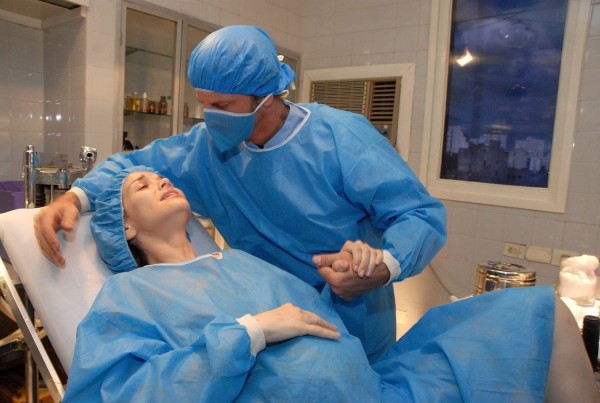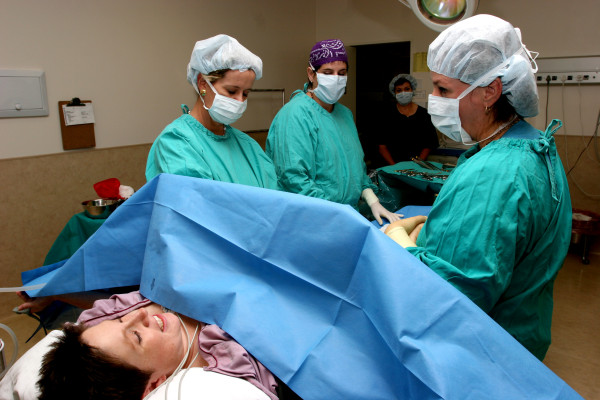Childbirth tears
In most cases, women give birth normally, without complications. But if difficulties arise, then most often these are gaps. Let's see what the causes of this pathology are and how you can avoid it.
Content
Rupture of the uterus during childbirth
This trauma to the female organ is considered the most severe. Fortunately, it happens quite rarely. Mainly the cause of the breakup uterus during childbirth, a previously performed cesarean section becomes. In this case, the uterus ruptures along the old scar. For this reason, most doctors are inclined to believe that if the first birth was performed by caesarean section, then the next birth will be the same operation.
In addition to the presence of a cesarean section in the future mother's anamnesis, the cause of this pathology may be:
- Obstacles that make it impossible for the baby to pass through the birth canal, for example, a woman in labor has a narrow pelvis or a very large fetus.
- Abdominal trauma.
- Carrying out stimulation of labor without the need for it.
- Long and weak labor.
- Techniques to help retrieve the baby, such as forceps.
The break can be in the form of a crack, complete or incomplete. The place of rupture is at the bottom of the uterus, in its body or in the lower part. First, there is a threat of rupture, in which doctors need to take measures to stop it. If help is not provided in time, then the process of rupture begins. In this case, everything is required to complete the delivery as soon as possible. Most often, an emergency cesarean section to remove the baby from the mother's body and stop the bleeding. If proper assistance is not provided, both the child and the mother may die.
Cervical rupture during childbirth
This type of pathology is quite common. In most cases, the cervix is torn during childbirth in primiparous women. The reasons for this phenomenon:
- First birth after the age of 30. In this case, the cervix is less elastic and more prone to tearing.
- Too much stretching of the cervix in the case of a short delivery or too large a baby.
- As a result of operations that help retrieve the child - the application of forceps or the use of a vacuum.
Depending on the nature of the damage, the rupture of the neck is usually divided into 3 degrees. With small gaps, up to 1 cm, a woman has slight bleeding and pain in the lower abdomen. The most common cause of such a gap is the wrong woman's behavior during childbirth.
If, on the ultrasound, the doctors incorrectly compared the size of the child's head with the size of the mother's pelvis, then a grade 2 rupture is possible. In this case, its size is no more than 2 cm, the place of rupture is concentrated only on the uterus and does not affect the vagina.
When involved in the rupture and the vagina, a grade 3 rupture is noted. In this case, there is heavy bleeding, often with clots. And in this case, a woman has all the symptoms of internal bleeding: a sharp drop in pressure, pallor, cold sweat, increased heart rate. In this case, an emergency operation is also performed.
How to prepare for a non-tearing birth
Not a single doctor will be able to give a full guarantee that the birth will go well, without breaks. But it is up to the woman herself to take some steps to reduce this risk.
First of all, you need to start eating right as early as possible - do not overeat and do not eat a lot of high-calorie foods. Then the baby will not be too big. Excessive baking can lead to the development of thrush, which reduces the distensibility of the walls of the birth canal. Also, you should not mindlessly take calcium supplements - it can make the bones of the baby's skull too hard. Primrose oil is very good for preparing the cervix.
It is useful to make special physical exercises to make the crotch more elastic. These are exercises to improve blood circulation, as well as stretching complexes. Kegel exercises are very good for preparing for the upcoming childbirth.
Performing a special massage of the perineal area significantly reduces the likelihood of rupture. It should be done every day in the last third of pregnancy.
In addition to physical training, psychological preparation is no less important. A woman should know how the process of childbirth proceeds, how to breathe correctly and push. All these questions can be studied in special courses. If you are completely scared, then it is best to consult a psychologist. He will help the woman to cope with panic before childbirth.






